Creating bonsai from older material, whether collected or nursery grown, can be very rewarding. With age comes character, and with good character we can create compelling bonsai.
Greater age can often mean greater challenges. When with working with relatively young pre-bonsai, we often have plenty of branches to work with and the trunks are supple enough for some amount of bending. With older pre-bonsai, we can expect the lower and interior branches to have died out. On the other hand, the trunks of older trees are often more interesting.
Here’s a procumbens juniper that has been grown as pre-bonsai for more than 15 years.
Procumbens juniper
In contrast with younger juniper bonsai, the interior branches have all died out.
No interior branches
Another sign that this tree is old is that much of the foliage is mature. Procumbens junipers are generally thought to have needle-type foliage. When they age, however, they can develop scale-type foliage. Often both types of foliage will appear on the same tree.
Juvenile foliage on the left, mature foliage on the right
Older pre-bonsai like this juniper require quite a bit of time to develop. When working with older trees, the trunk is the single most important characteristic to consider. Often the shapes and movement will be irregular. This can be a good thing, but it may take some creativity to make the most out of an old trunk with irregular movement.
Trunk detail
From the other side
Older pre-bonsai may be good additions to a collection when there’s interest in the following questions:
- Can I bend heavy branches or trunks?
- Can I create deadwood features?
- Can I make plans that span several years?
- Can I graft?
- Can I create branch structure from scratch?
- Do I enjoy projects that require 5-10 years?
Procumbens juniper from the other side
The above tree was recently repotted into bonsai soil and will require up to two years before work can begin. During this time I’ll have ample opportunity to think about how to develop the tree.
How can I cut down on the time required to create a compelling bonsai? More on that next time.
Subscribe to Bonsai Tonight
New Posts Delivered Every Tuesday and Friday

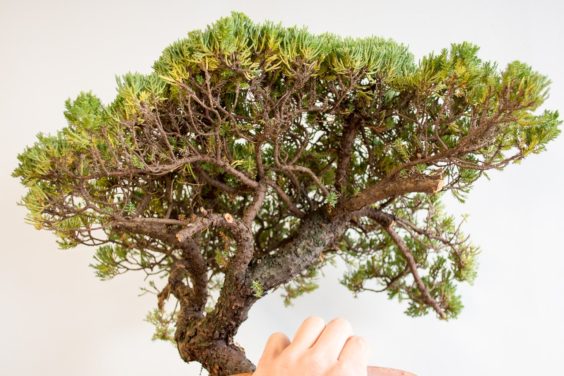
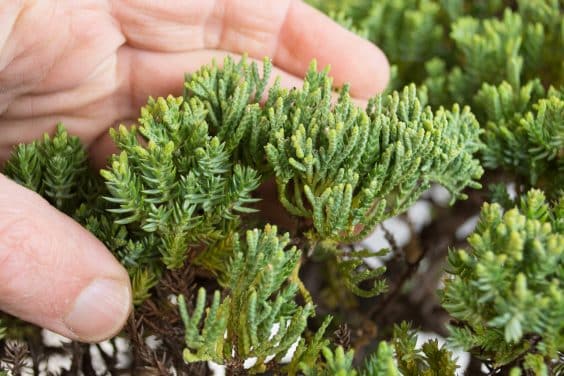
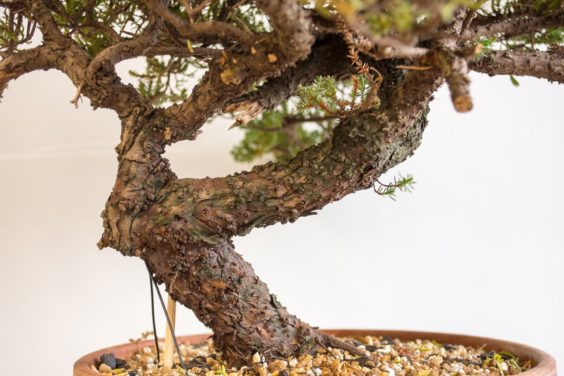
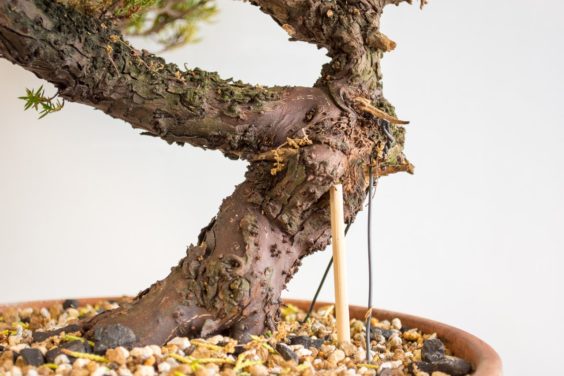
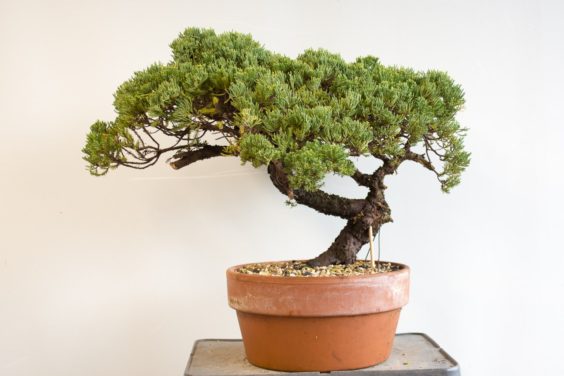
Massumi says
Hi Jonas.Man can you figure the dimension of your contribution for those who needs this kind of information?All your posts are accurate detailed,rich in practise mode and tips…Thank you very,very,very much
Jonathan says
Hi Jonas, Love this segment you’re doing on suitable material for bonsai. Could you explain in a little more depth why it would require up to 2 years before work can begin? Are you trying to let some of the branch structure mature and thicken up a little more before you being to style?
In those 2 years what exactly are you doing? (Other than obviously watering, fertilizing and feeding) Are you doing any light pruning? Clean out? Minor wiring to get the secondary branches in the right position? What are you looking for in the tree based on your experience to know that 2 years should be enough?
Thanks.
Jonas Dupuich says
Hi Jonathan – very good question, could be a topic for another post. In brief, I’ll be focusing on growing roots for the next 1-2 years. The doesn’t have a strong root system as it’s been growing in so-so soil for a very long time without repotting. Until the tree has lots of roots and is more stable in the pot, I’ll hesitate to do more than minor work. The minor work will consist of light cutback and thinning in fall. Thanks for asking!
Todd says
It looks like you have a cure for one of my problems… sometimes, after I re-pot, the tree sags back out of my potted-up vertical… so a year later, I wonder what happened. even though I tied the tree down… but it appears that you have braced this one with a chopstick and a guy wire, to stop it from shifting down in that one direction… Nice trick, I will try to use that
…
Alain K. says
I wonder what your choice will be. To me, one of the branches must go and be jinned: either you keep the branch on the left and jin the other one, but that branch has a rather “boring” curve. Or jin the branch on the left and keep the one on the right that , to me, has more character. I’m curious to see what your project is on this one…